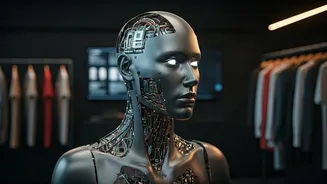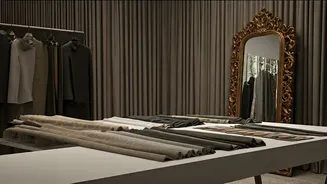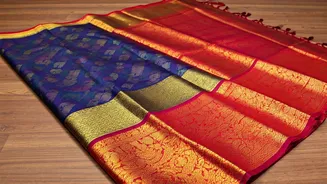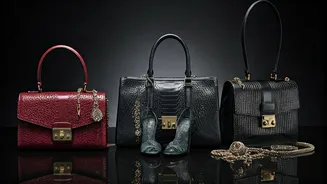AI's Creative Touch
AI is increasingly playing a pivotal role in the design process. Algorithms analyze vast datasets of trends, social media activity, and consumer preferences
to identify emerging styles and predict future demands. Designers can leverage these insights to make informed decisions about color palettes, fabric choices, and overall garment silhouettes. AI-powered tools can also generate design variations, enabling designers to explore multiple concepts quickly and efficiently. This accelerates the iterative design process, reducing the time from concept to market. Furthermore, AI can assist in creating personalized designs by analyzing an individual's body measurements and style preferences. These technologies can suggest outfits tailored to a shopper's unique tastes and body shape, resulting in a more gratifying shopping experience. Through this creative intersection of technology and artistry, AI offers designers innovative tools to fuel their imaginations and push the boundaries of fashion design.
Forecasting Fashion Trends
Predicting the next big thing in fashion has always been a challenging endeavor, but AI is providing greater precision. AI algorithms are adept at processing massive volumes of data from diverse sources, including runway shows, street style blogs, and sales reports. By identifying subtle patterns and correlations, these systems can forecast upcoming trends with remarkable accuracy. This predictive capability gives fashion brands a competitive edge, allowing them to anticipate consumer demands and adapt their collections accordingly. AI can pinpoint shifts in consumer tastes faster than human analysts, making trend forecasting more accurate and timely. This allows businesses to reduce risks associated with overproduction and unsold inventory. Armed with AI-driven insights, fashion businesses can make data-backed decisions about their product lines, marketing campaigns, and even supply chain logistics, helping to maintain their relevance in a dynamic marketplace.
Optimizing Supply Chains
AI is revolutionizing the fashion supply chain, increasing efficiency and reducing waste. AI-powered systems can analyze real-time data, enabling brands to optimize inventory levels, manage logistics, and decrease lead times. This technology can predict demand fluctuations, preventing overstocking and minimizing the risk of unsold merchandise. AI can also streamline operations within the supply chain by identifying bottlenecks, suggesting more efficient routes for shipments, and automating tasks such as order fulfillment and warehouse management. This heightened efficiency contributes to cost savings and reduced environmental impact. Furthermore, AI helps to create more transparent supply chains by tracing materials and production processes. This facilitates ethical sourcing practices and helps brands to align with consumer demand for sustainable and responsible fashion. By embracing AI, fashion businesses can achieve a more responsive, efficient, and ethical supply chain, which improves overall sustainability and brand reputation.
Personalized Shopping Experiences
AI is transforming how consumers interact with fashion brands, driving a shift towards personalization. Through sophisticated algorithms, AI can analyze a shopper's browsing history, purchase patterns, and social media activity. This allows retailers to curate individual product recommendations, providing a tailored shopping experience that enhances customer satisfaction. Chatbots powered by AI can offer personalized styling advice and answer customer questions in real time, simulating an in-store consultant experience online. Virtual fitting rooms, another AI application, allow shoppers to virtually try on clothing items, enhancing the convenience and engagement of online shopping. These innovative technologies are making shopping experiences more enjoyable and customized than ever before. This level of personalization can also lead to increased sales and customer loyalty, creating a win-win scenario for both consumers and retailers. As AI continues to evolve, shopping experiences will become even more customized, efficient, and engaging, solidifying its place in the fashion sector.
The Human Element Remains
While AI is reshaping the fashion industry, it's not meant to completely replace human creativity and intuition. The true value of AI lies in its ability to augment human capabilities, not to eradicate them. Fashion designers, stylists, and other industry professionals still hold essential roles in interpreting data, making creative decisions, and creating meaningful collections. AI can free up creative professionals from time-consuming tasks such as data analysis and trend research, allowing them to focus on the more artistic aspects of design and brand development. This collaboration between human ingenuity and artificial intelligence promises a future where technology enhances and amplifies human creativity. It creates a balance where designers can leverage the power of algorithms while retaining their unique vision and flair. This ensures the industry will retain its human core while taking advantage of technological advancements to reach new heights.










